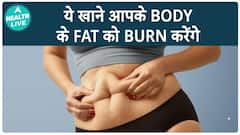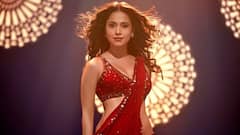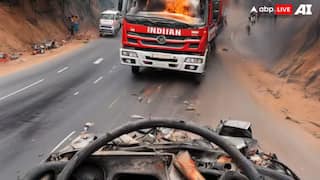Indian Billionaires Wealth Increased By 35% During COVID-19 Lockdown: Oxfam Report
While there are many sorrows to attach with the pandemic there was some silver lining for few. The Oxfam report highlighted that the pandemic has widened the existing social, economic, and gender-based inequalities.

COVID-19 pandemic gripped the entire world as most of the activities came to a screeching halt. As the world looked on, the pandemic grew its tentacles expanding and affecting each segment of the society be it personal or professional for an individual being.
While there are many sorrows to attach with the pandemic there was some silver lining for few. As per the latest India supplement of the Oxfam report 'The Inequality Virus', the wealth of Indian billionaires increased by 35% during the lockdown. The report also highlighted that the pandemic has widened the existing social, economic, and gender-based inequalities.
Rise of Indian billionaires during the pandemic:
Even as most of India has faced a loss of livelihoods and its economy has dipped into recession for the first time after a quarter of a century, the wealth of Indian billionaires increased by 35% during the lockdown and by 90% since 2009 to $422.9 billion. This ranks India sixth in the world after the US, China, Germany, Russia, and France. The increase in wealth of the top 11 billionaires during the pandemic can easily sustain the MGNREGS scheme or India's health ministry for the coming ten years, according to Oxfam's inequality report for 2021.
Mukesh Ambani emerged as the fourth richest man globally and the richest in India and Asia1 with his wealth rising to Rs 5837 billion -a rise of 72% in his wealth. He was making Rs 90 crore per hour during the pandemic when around 24% of the country's people earned under Rs 3000 per month during the lockdown.
<iframe style="border:0px;" scrolling="no" class="audio" src="https://api.abplive.com/
Wealthiest escaped pandemic while most of Indians suffered:
India's wealthiest people escaped the worst impact of the pandemic while the majority of India suffered. This gross asymmetry of power and resources is not just an amoral argument but a practical question.
As per International Labour Organization(ILO), with a share of almost 90% of people working in the informal economy, about 40 crore workers in the informal economy are at risk of falling deeper into poverty during the crisis. The increase in India's wealthiest person during the pandemic could keep 40 crore, informal workers, out of poverty for at least five months.
The Government subsidized the corporates:
The Government was reluctant to spend on public welfare, but the Government actively subsidized the corporate sector and India's elites.
Media reports have highlighted how the fourth tranche of the Government's COVID-19 relief package benefited many corporates, including Adani, Reliance Group, and Vedanta. The provision of interest-free loans to Medium and Small Enterprises alone is calculated to have been worth Rs 3 lakh crore, almost ten times the quantum of funds directly given to the poor (including Jan Dhan, PM Kisan Yojana and transfers to old persons, widows, disabled and construction workers).
A survey done by Credit Vidya reported that the loss of income among those earning more than Rs 60,000 a month was 10% compared to their pre-pandemic income, whereas the income of those earning less than Rs 20,000 a month reduced to 37% of their pre-pandemic income.
Also Read|Budget 2021 May Look To Support Vulnerable Segments Of Society
1.7 lakh lost jobs every hour in April & 167 committed suicide due to job loss:
About 84% of the households suffered a loss in income in April 2020. As many as 170,000 people lost their jobs every hour in the month of April 2020. Approximately 167 people killed themselves due to starvation and financial distress from job loss and reduced income between March to July 2020.
India introduced one of the earliest and most stringent lockdowns in the face of the pandemic, whose enforcement brought its economy to a standstill triggering unemployment, hunger, distress migration, and untold hardship in its wake. The rich have escaped the pandemic's worst impact, and white-collar workers have easily isolated themselves and have been working from home. However, most of India has faced the loss of livelihoods.
Policy on Taxation:
India has currently achieved only 35% of the total tax revenue target of Rs 16.35 lakh crore for the fiscal year 2020-21. Only one-third of the entire receipt has been achieved till September 2020, while more than 50% of the budgeted expenditure has been made. Any attempt to increase the tax–GDP ratio through GST would lead to higher inequality in a country because GST is an indirect tax, and it is levied at the same rate on the poor and the rich. 30 This can be rectified through differential GST rates on rich and poor or removal of GST rates from essential commodities altogether.
Impact of Covid-19 on Intersecting Inequalities:
During this pandemic, the marginalized communities' experiences have been informed by the intersecting axes of identities as caste, class, gender, religion, and region, exposing the fractures in the social and economic systems. As such, its impact on health, livelihood, and access to education.
Access to Education:
Governments globally have temporarily shut down educational campuses to curb the spread of the pandemic. The central Government in India announced a country-wide lockdown of all educational institutions on March 16, 2020. Until the end of October, the number of students affected by the educational institutions' closure stands at over 32 crores.41 Of those, 84 percent reside in rural areas, and 70% attend government schools. The closure of schools and the shift to online education classes has had severe consequences for the children mainly belonging to the poorer households and marginalized social groups and runs the risk of exacerbating inequalities between the genders and the rich and the poor in an already unequal educational system.
Unequal risk of drop-out:
Short-term disruption in education risks permanent drop-out. While the children of India's elites have been sheltered from the pandemic's worst impacts, many children from poor and marginalized families will never return to school. Oxfam India's survey across five states reports that close to 40% of teachers in government schools fear that the prolonged school closure might lead to a third of the students not returning once schools reopen.
Shrinking state schemes for the poor:
Schools have not just been the primary providers of education but the site of delivery of a range of social welfare schemes. The closure of schools has disrupted access to schemes for the poor in India's welfare system. Over 60 lakh SC and ST students enrolled in higher secondary education who get 100%, and 75% centrally funded scholarships have not received it. States have either discontinued the scheme or are running it at a limited scale. Government schools' closure has disrupted the midday meal scheme (MDM), covering 120 million children in 1.26 million schools. Around 77.8% of ST and 69.4% of SC children are in government institutions, many of whom depend on MDM for their nutritional intake.
Widening the Digital divide:
Like many countries globally, India closed its schools and introduced a range of emergency education measures, particularly a shift to online or distance education modes. The Government supported learning to the virtual space through online portals as Diksha, National Repository of Open Educational Resources, Swayam, and e-Pathshala, and through distance modes as television and radio. These initiatives are in good faith but have ignored the pressing digital divide plaguing India. Entering the pandemic, only 4% of rural households had a computer, and less than 15% of rural households had an internet connection. Much of the Government's distance learning modes of instruction were undertaken through DTH (Direct To Home) TV despite only 5.25% of the households having a DTH subscription. Low and no-tech delivery methods have been ignored amidst the push to move all instruction online or into the digital space.
The Great Divide Between the Rich and the Poor:
Cases of students missing classes due to lack of smartphones or an internet connection have been pouring in from across the country. One such instance is of two girls from the same class at a small private school in Punjab that highlights the glaring difference between the rich and the poor's experiences. While one of the girls, residing in a posh area, had WiFi at her home and found classes from home to be "awesome," the other girl could barely attend 10-12 classes in one and a half months. She had to rely on her smartphone's 4G signal, most vital in her terrace, due to which she would often study there in the heat of summer. Even then, she could not always log in to her classes. Watching videos online was a problem, and so was downloading. Electricity was available only for a few hours, and keeping her phone charged added to the stress. In another instance, a teenager in Kerala killed herself due to her family's inability to buy a smartphone or television. Her father was a daily wage earner.
The burden of individualizing instruction:
As government schools closed, the burden of ensuring children continuing their education fell squarely on individual households, with those financially better off and educated benefitting. In the ASER 2020 survey, children in families with parents educated up to Standard X were almost twice as likely to have access to a smartphone for instruction during the pandemic and nearly twice as likely to receive family support for learning. Children from low-income families and without access to technology were left without access to useful education delivery modes.
The Private Schools:
An Oxfam India survey showed that close to half the parents spend over 20% of their income on education during the lockdown. About 39% of parents reported being charged hiked fees despite schools' physical closure and state guidelines restricting fee hikes. As many as 15% of parents were charged fees for uniforms despite schools being closed. India saw a shift from private to government schools between 2018-2020, in all grades and among both boys and girls in households' face of financial distress and shutdown among private schools.
Inequalities in Health
India currently has the world's second-largest cumulative number of COVID-19 positive cases. Globally, the poor, marginalized, and vulnerable communities have higher rates of COVID-19 prevalence. However, India does not report case data desegregated by socio-economic or social categories making it difficult to gauge the distribution of the disease amongst various communities. Nevertheless, the spread of disease was swift among poor communities, often living in cramped areas with poor sanitation and using shared common facilities such as toilets and water points. Similarly, the quick spread of disease across dense suburban slums of Mumbai highlighted the greater vulnerability of those in more marginalized communities. The incidence of COVID-19 positive cases has been highest in the slums of Mumbai.
Key quote:
The increasing inequality and the unequal impact on the haves and the have-nots have prompted many to refer to the health crisis as the "pandemic of inequality." As Antonio Guterres, the United Nations Secretary-General had said: "The COVID-19 pandemic has played an important role in highlighting growing inequalities. It exposed the myth that everyone is in the same boat. While we are all floating on the same sea, it's clear that some are in superyachts, while others are clinging to the drifting debris."
Global Scenario:
During the pandemic, many billionaires saw a rise in their wealth. Jeff Bezos, the world's richest man, saw an increase to $200 billion, and the wealth of Elon Musk increased to surpass Bezos for some time, making him the second richest with a net worth of $183 billion. Other tech giants like Google founders Sergey Brin and Larry Page, and former Microsoft CEO Steve Ballmer saw a wealth surge by $15 billion since March 2020. Eric Yuan, founder, and CEO of Zoom, too, saw a sharp rise in his wealth, which is reportedly worth USD 2.58 billion. The global billionaires' wealth rose by 19 percent during this time. The world's 500 richest people gained $809 billion this year, a 14% increase since January 2020, while 100 million people were pushed into poverty.
The pandemic also risked the income of the world's poorest population, potentially getting reduced to $50 million a day in developing countries where millions of people live just above the poverty line.
Trending News
Top Headlines








































